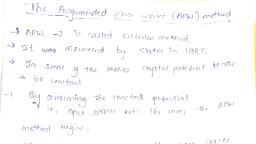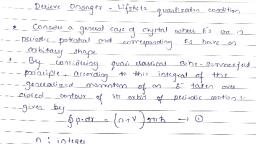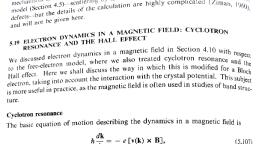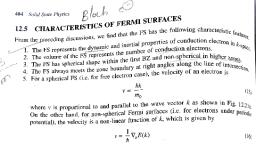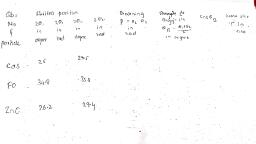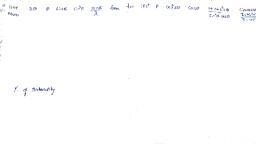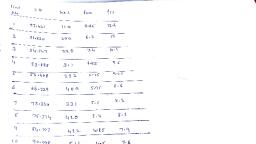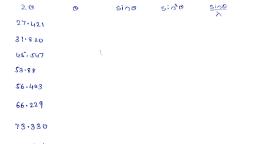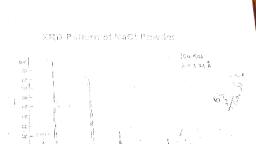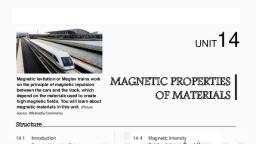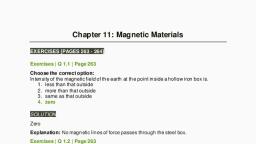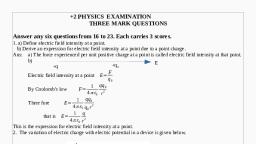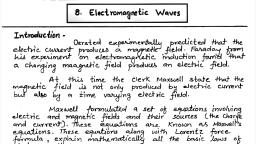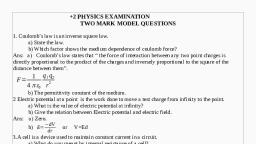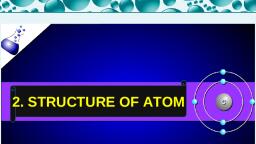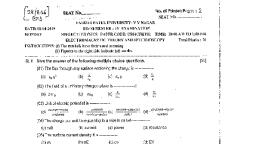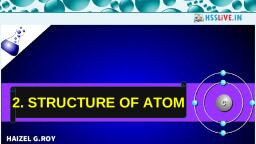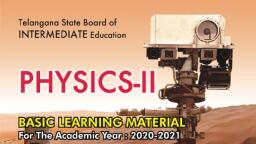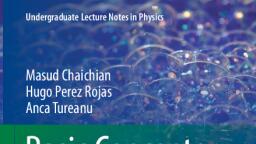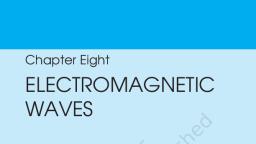Page 2 :
dolid State Physics, , E(kz, ky, kz), , uder, , field, the, the action of magnetic, , in, Totating in circular orbits, , =, , (k;, , ky, , +, , +k2), , electrons, , do n o t, , move, , l1n, , a, , raight path, , straight, , but, , AK,, , plane, , a, , (26, , mo, , skart, , in Fig, perpendicular to the field as shown, directed, 12.29. Let the magnetic field be, motion of an, along the z-axis, then the, two, electron can be resolved into, , Components: (i) the longitudinal component, (i.e. the motion along the field B), and (1), the transverse component, , (i.e., , the motion, , kx, , in, , a plane perpendicular to B). The magnetic, , Fig. 12.29, , field does not change the longitudinal, component and hence the energy related, , Motion of an electron, , in a magnetie, , field, , to, , this is, , E 2mo, , (27, , The transverse motion is similar to the motion of linear harmonic oscillator which oscillas., about an equilibrium position with the cyclotron frequency given by eq. 24. Such an oscillaton, motion is quantized and hence the corresponding energy spectrum consists of discrete enerov, , levels, , E =n+ho, , 28), , where n0, 1,2,.. . From eqs. 27 and 28, the energy of electron states can be expressed asthe, sum of a translational energy along the magnetic field, together with the quantized energy in a, plane perpendicular to the field. Thus the net energy of the electron states in the magnetic field, , without taking into account its spin is., , E(1 k,)=, For, , a, , ho,, , +, , hk, , (29), , 2mo, , classical motion, any values of Ej are allowable, i.e., , E (cl)= m, v =moEr, , (30, , 2, , On the other hand, for a quantum motion, only discrete values of E. (ea, 28), , are, , allowabe,, , E (qua)=n 5 ho, , (31), , +, , he radii of different orbits can be found by, establish, , the relation between, , correspondence principle (used in quantun h e, , classical and quantum, quantities). according, , mechanics, , have, , to, , Wn
Page 3 :
The Fermi, , Surface, , 469, , mgr2, ce the radius ofthe nth orbit is given by, Henca, , =, , 2h, , mo, 20 shows E versus k curves, Fig. 12.30, Theseare known as Landau levels., , (32), , (according to the eq. 29) for different radii of, , the nature of, In, distribution of, ectron states, states in k-space under the, ectron, actionof, us consider the, magnetic field, let, case of a one, zonemetalwith spherical FS without spin. When, R-0 the allowed states are distributed uniformly, inside the Fermi sphere. Fig. 12.3 1a shows the, section of the Fermi sphere along kz ky, orde, , to, , see, , E, , elect, , -, , ho+ 2mo, 2, , ho, 2 mo, , plane, , passing through the centre (i.e. k,= 0). Allowed, , states fill the circle of maximum radius, k = 2mEp in that plane. For any other, parallel section kz = constant and the radius of, , As, , k, increases, A uniform, , to, , n, , 0, Fig. 12.30, , the circle is, , from zero to, , filling, , quasi-continuous, , curvatures., , =, , 0, , Landau levels, , kp,, , this radius decreases and becomes zero when, k, = kp., of the Fermi sphere by the points, depicting the allowed states corresponds, =, E, E, energy spectrum, (kz, kys kz), where kg,, kz run, , continuous sets of values from 0, , n, , 0, , to, , ky,, , kp., , n 0, , (a), hmec for free electrons (a) without moan, , (b), , through quasi-
Page 4 :
410, , Solid State, , Physics, , total, , the, , c t r o n s in the m, n, of e l eectrons, b, a,, the, first, c o n s i d e r only, , number, , b, band which, , not change, field does, an example,, of a, field is applied, bands. As, magnetic, between the, W h e n the, orkYalono, uses the redistribution, a r e empty., the a l l o w e d electron, other bands, determine, the, is, filled, whereas, 31, level with, to aa level, r, levels given by eq., orbit, orbit relating, discrete, energy, Z-axis), the, the, of, radius, 1.e., The, =, out earlier,, constant in -space., , Application, , magnetic, , ield, , their, partly, , 1s, , Tound, , by the, , correspondence, , principle, , as, , ho, , +2, , pointed, , k,, , or, , magnetic field,, shows that under the effect of, , nis, (wheren, , =, , 0, 1, 2,... ), , all the allowed, are, , states, , with quantum, quantum number, , relating, , k, , planes kz, , applied (sa, electron orbits in the, , +, , =, , the, , states, , lying, , 33), between, , the, , orbits ofra, , radii k, , are forbidden. Hence,, , in the plane, , k2, , drawn onto the nearest orbit, , as, , =, , constant, , shown in, , Fig. 12.31b. When a three dimensional analogue, , is considered, this means that in the magnetic, field all allowed states within the FS are, condensed on the surface of coaxial cylinders, parallel to kz axis. Fig. 12.32 shows the occupied, , regions of k-space without, , a, , magnetic field,, , whercas Fig. 12.33 shows the occupied regions, of k-space with a magnetic field. The lower, , in Fig. 12.33 shows the dependence of, the energy (represented by eq. 31) of states on, , graph, , Fig. 12.32, , each cylinder in the plane k = 0, on the radius, , Occupied region of k-space without a, magnetic field, , of the cylinder. The right hand curve represents, , the relationship between k, and the energy of state on each cylinder., I n the above discussion, we considered a simple case of one zone metal with free electron, spherical Fermi surface. Now, let us consider a more general case of a crystal where electrons, are in a periodic potential and the corresponding FS may have any arbitrary shape. For this case,, 1, , quasi-classical quantization given by Bohr-Sommerfeld correspondence principle can be used., of, momentum of an electron taken over the closed, to an, , According this. integral motion, the generalized, is, , contour of its orbit of, , periodic, , given by, , p dr =(n +7)2Th, where, , n, , is, , an, , integer,, , (34), , and yis a phase correction, (typically 7, momentum and position of the, particles, , 1/2 and p and r are conjug, representing, as it traces out its orbit., The generalized momentum of a free electron in the presence ofa magnetic, field, ically, , variables, , conjugate to r is given by, (35), , p =hk + eA, where A is a vector, potential, then p in eq. 34, we have, , (Curl A, , =, , B)., , Substituting, , the value, , of k from, , eq., , 19, , n, , and
Page 6 :
412, , Solid State, , Physics, , OI the orbit in that space. This can be related to FS in k-space through eq. 19, which savs thus, hat the, , orbit in k-space is eB/h times larger than the orbit in the real space. Therefore,, , -(, , A, o-BA,-B28A, or, , eB, , A, , 2, , so that, , A, , (38), , e2B, , Substituting this into eq. 36, we have, , Ax, , 27teB(, h, , This is known as Onsager-Lifshitz, quantization condition. The, of, chagne quantum number is given by, Ak+1 A, , Substituting, , this in eq. 23,, , we, , obtain the, , This is, , just expected., , 12.9, , EXPERIMENTAL STUDI, , (39, change, , in the, , area, , Ak for a unt, , 2TeB, , corresponding change in the energy, dE = h@e, , (40), at the, , rd, , (4

